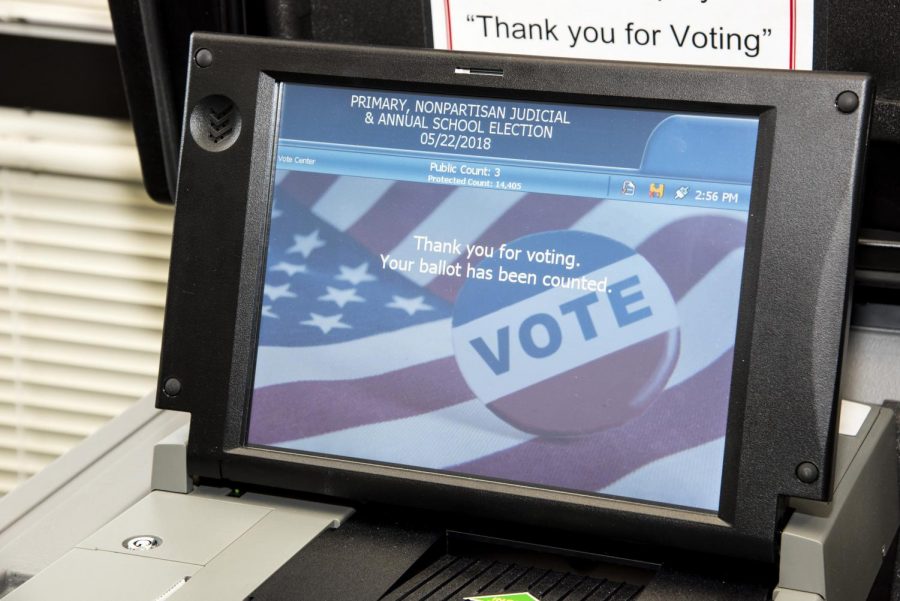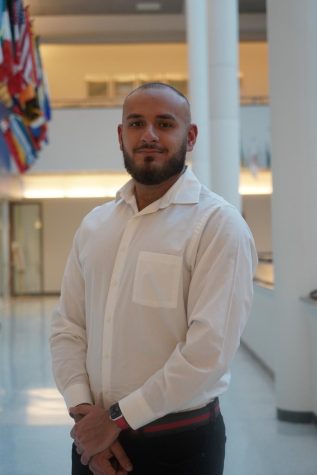Biometric voter authentication would transform voting in the US
November 19, 2021
Long lines and inconveniences sound all too familiar to Americans when they think of voting. The 2020 presidential election exposed the flaws in current American voting systems, with many people waiting hours in line to cast a ballot. This is neither optimal nor sustainable. — Americans cannot be expected to endure these conditions.
Secure voting doesn’t need to be inconvenient for people. Biometric voter authentication would make voting much safer, more convenient and decrease voter distrust in the current institutions.
Biometric voter authentication looks at the physical features of a prospective voter, often their fingerprint, but sometimes other features such as palm vein recognition and iris recognition. Facial recognition is also a possible method, but it is not a viable option at this time because it has high rates of inaccuracy.
The best case for biometric voter authentication is that nobody in the world has the same fingerprint, same palm vein pattern or same iris/retina pattern, making voters all the more distinguishable and reducing the possibilities of identity fraud.
Biometric authentication methods are incredibly accurate at recognizing these unique patterns. The false rejection rate, FRR, the number of times a user is wrongly denied access to a system, and the false acceptance rate, FAR, the number of times a person is wrongly granted access to a system, have both been shown to be incredibly low.
The FRRs of fingerprint recognition, iris/retina recognition and palm vein recognition are .1%, .01% and .01%, respectively. The FARs of the above are .001%, .0001% and .00001%, respectively, according to Keyo.
This bodes well for fighting off claims of voter fraud, most particularly the claim that some voters have voted multiple times. Since every person is unique in their features, and since the technology currently available is nearly 100% accurate at recognizing these features, it would be impossible to argue that someone voted twice.
One of the greatest aspects of biometric voting is that it can be made incredibly convenient: voters would be able to vote electronically.
Currently, most smartphones can recognize fingerprints, meaning that voters would be able to vote securely via a mobile app or website and verify their print with their smartphone. Given the high accuracy of biometrics, it would be both convenient and safe for Americans to vote this way.
Additionally, roughly 85% of Americans own a smartphone today. If a good proportion of this population decides to vote via their smartphone, in-person lines at poll-sites would be dramatically reduced.
People would no longer have to spend a sizeable amount of their day waiting in line just to cast a ballot. Plus, people who work unusual hours, are out of their state or are out of the country on Election Day, would be able to securely vote from wherever they are located.
However, there is a major concern that countries must address before implementing this overhaul. The biometric authentication system must be tested to prove its efficacy before it is rolled out to the entire public.
This month, Nigeria’s government failed to sufficiently do so, and in rolling out the biometric voter registration system, it rolled out a flawed system that failed to properly authenticate voters. Lack of sufficient materials were the reason for the failure, but this could have been prevented had it been tested beforehand.
When due diligence is done during preparation, though, there can be a very successful rollout.
North Macedonia introduced biometric authentication in its local elections last month and saw roughly 48% of 1.8 million voters use biometrics: in particular, fingerprints. Implementing biometrics can be done anywhere, as it was done in North Macedonia, and is being done in many countries around the world.
Another concern with biometrics is privacy. Many are sensitive to the government having records of peoples’ biometrics.
Unfortunately, these concerns are irrelevant because the government already has access to deeply personal information on people. At a minimum, the government has access to people’s addresses, citizenship status, occupation, internet usage and likely much more.
The government already has all of this information without having peoples’ biometrics, When weighed against the extensive information the government already has, the privacy intrusion of biometrics is insignificant.
Privacy concerns must also be weighed against the fundamental right to vote; there’s a lack of confidence in this country’s electoral institutions. The voting process is so inconvenient that it makes voting unfeasible for many.
It doesn’t have to be this way.
To restore confidence in the reliability of the country’s electoral systems, to further delegitimize accusations of voter fraud and to ensure high levels of accuracy, biometric voting systems must be diligently tested and implemented throughout the country.









Anthony Ciccantelli • May 30, 2024 at 4:19 am
Billions of dollars each day are accessed, transfered and transacted using mobile telephones. Why are we standing in lines in the rain for hours to vote ? How can we help advance a new biometric voting alternative ?